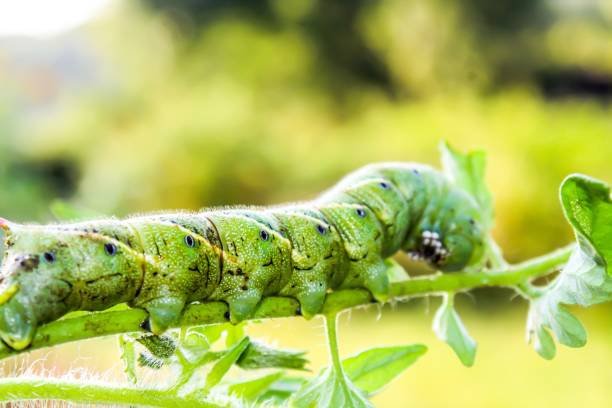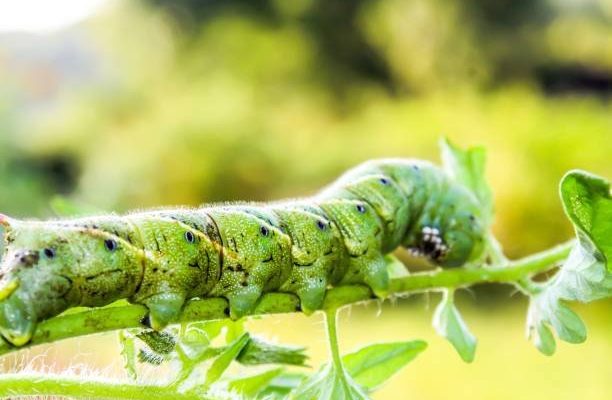
Diatomaceous earth, or DE for short, is a natural, non-toxic powder that’s made from the fossilized remains of tiny aquatic organisms called diatoms. Think of it like tiny shards of glass that are harmless to humans and pets but are deadly to soft-bodied insects like hornworms. If you’re new to this, using diatomaceous earth can feel a bit like discovering a hidden superpower in your gardening toolkit. Let’s dive into how it works, how to use it, and why it might be the perfect solution for your garden.
What Are Hornworms?
Hornworms are the larvae of moths, specifically the *Manduca sexta* and *Manduca quinquemaculata*. If you’ve noticed large, green caterpillars on your tomatoes or peppers, chances are you’re dealing with these little guys. They can grow up to 4 inches long and have a distinctive horn-like projection on their rear, which is where they get their name.
These pests are particularly problematic because they can strip a plant of its leaves and fruit in just a few days. Imagine waking up one morning to find your tomato plant looking like it’s been through a storm—leaves all gone, and maybe even a few tomatoes nibbled on. That’s the handiwork of hornworms.
Understanding the enemy is half the battle. So, let’s explore how diatomaceous earth can help keep these hornworms at bay.
How Does Diatomaceous Earth Work?
Diatomaceous earth works its magic through a unique mechanism. The tiny, sharp particles of DE don’t have any poisonous chemicals. Instead, they act like tiny blades to insects. When hornworms come into contact with the powder, it clings to their bodies. As they move, the particles create micro-abrasions that lead to dehydration.
You might be wondering, “Is this safe for my plants?” The answer is yes! DE is completely safe for plants and doesn’t harm beneficial insects like bees or ladybugs. It can even be a helpful addition to your soil, improving aeration and water retention over time.
For best results, it’s crucial to apply DE when hornworms are active. This usually means checking your plants regularly—early morning or late afternoon is often ideal. You’ll want to get DE on the hornworms before they do much damage, so keep a close eye out!
How to Apply Diatomaceous Earth for Hornworm Control
Applying diatomaceous earth is straightforward, and it doesn’t require any special tools. Here’s a step-by-step guide to get you started:
- Choose the Right DE: Make sure to select food-grade diatomaceous earth. It’s safe for plants and pets.
- Prepare the Area: Ensure your plants are dry. Applying DE to wet leaves will reduce its effectiveness.
- Dusting Technique: Use a dusting applicator or a fine mesh sieve to lightly coat the leaves and stems of your plants. You want a thin layer; too much can clump and be less effective.
- Frequency of Application: Reapply after rain or watering, as moisture will wash the DE away. Check your plants regularly for new hornworm sightings!
It might feel a bit tedious at first, but honestly, staying vigilant pays off. You’ll start to see fewer hornworms and healthier plants in no time.
Comparing Diatomaceous Earth to Other Control Methods
There are several methods out there for hornworm control, but diatomaceous earth stands out for a number of reasons. Let’s take a quick look at how it compares to more conventional pesticides and other natural methods:
| Method | Effectiveness | Safety for Plants | Environmental Impact |
|---|---|---|---|
| Diatomaceous Earth | High | Yes | Low |
| Chemical Pesticides | Very High | No | High |
| Handpicking | Medium | Yes | Low |
| N beneficial insects (e.g., parasitic wasps) | Variable | Yes | Low |
While chemical pesticides can quickly eliminate pests, they often come with a slew of potential health risks and environmental concerns. Diatomaceous earth, on the other hand, is gentle on your garden and the planet. If you’re looking for an effective yet eco-friendly option, DE is a fantastic choice.
Preventing Future Hornworm Infestations
Using diatomaceous earth is an effective way to tackle hornworms once they’ve invaded, but prevention is key to keeping them from coming back. Here are a few tips to help you safeguard your garden:
- Crop Rotation: Change the location of your plants each year. This disrupts the life cycle of hornworms.
- Encourage Natural Predators: Birds, parasitic wasps, and even certain beetles love to snack on hornworms. Attract them by planting flowers like marigolds or daisies.
- Regular Monitoring: Keep an eye on your plants. Early detection means a quicker solution. Look for droppings or signs of damage.
By taking these proactive steps, you can significantly reduce the chances of a hornworm takeover.
Using diatomaceous earth for hornworm control is a simple yet powerful strategy that brings a sense of empowerment to any gardener. Not only does it help protect your plants naturally, but it also aligns with a more sustainable approach to gardening.
As you get started, remember that gardening is a journey. Each pest encounter is an opportunity to learn more about your plants and how to care for them. With diatomaceous earth in your arsenal, you’re well-equipped to tackle hornworms head-on, allowing your garden to flourish beautifully. Happy gardening!

